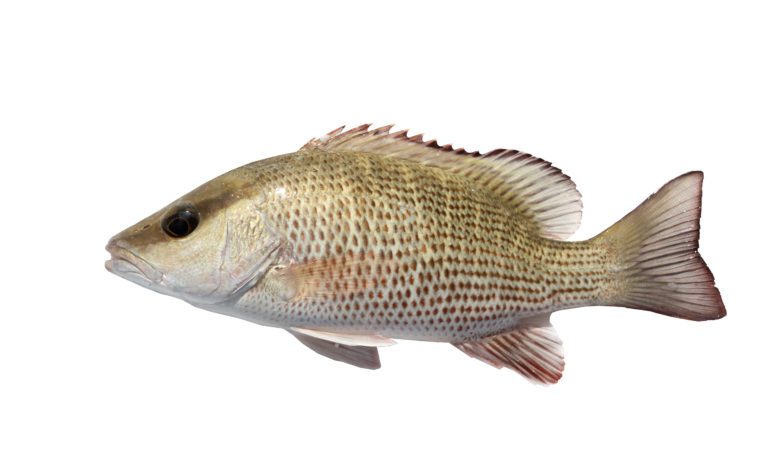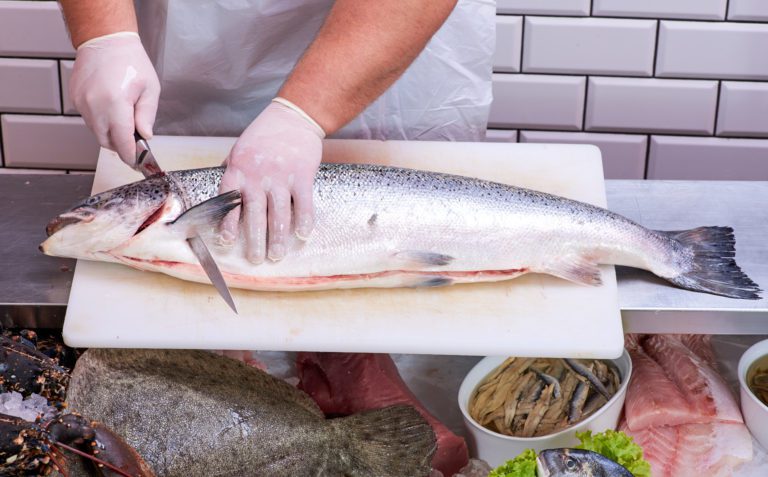How to Catch Bluefish in Sarasota: Everything You Need to Know

Bluefish or Pomatomus saltatrix is a popular game and food fish that can be caught in various parts of the world, except in the northern Pacific Ocean. These are marine pelagic fish, also known as elf in South Africa and tailor in Australia and New Zealand.
These fish survive in temperate and subtropical waters, so they’re commonly found in Sarasota in Southwest Florida, where they can be found at different times throughout the year. They’re feisty and can provide a lot of fun for beginner and experienced anglers. So, if you want to know how to catch bluefish in Sarasota, you’ve come to the right place.
Where to Find Bluefish
Although bluefish are pelagic fish, they spend most of their time near the shore. This is why some anglers call them inshore fish at different times.
Bluefish spawn in estuaries and bays and spend some time near the shore, especially when food is abundant. The young fish spend their time near the shore, moving to the deep waters when they reach maturity.
In Sarasota, it’s more common to see bluefish in the winter months, when they migrate south as the temperatures rise in the north. Before April, blues move north, reaching Massachusetts before June. Here’s where to find blues of all different sizes:
Snapper Blues
These are the young fish that weigh up to ½ pound. They’re suitable for beginner and less experienced anglers using a light stream-trout-caliber tackle, adding an extra element of fun. Snapper blues are found in Sarasota’s Bay near piers, docks, bulkheads, and sod banks.
Bluefish
Fish measuring between one and five pounds are usually referred to as blues. These fish are commonly found in inlets, jetties, and along oceanfront beaches, especially during the spring and summer.

Chopper Blues
Chopper blues weigh between six and ten pounds and are found near Sarasota, Florida in the winter months. Since they’re heavier and more aggressive, they require upgrading to medium-heavy gear. Chopper blues can be found near the shore when there’s plenty of food, but they’re mostly found offshore.
Slammer Blues
Slammer blues that weigh between 11 and 15 pounds prefer the cool water of Florida’s coast, where they can be found feeding around inlets or offshore. Fall migration brings them closer to Sarasota, but they can be found offshore around reefs and wrecks. A stout rod and reel with a solid drag are needed to catch these fish.
Gator Blues
A gator blue weighing more than 15 pounds is quite rare to be potted near the shore. Environmental shifts and altered migration patterns have made them more difficult to find, although you have a better chance of catching one offshore.
How to Catch Bluefish
Bluefish travel in large schools, presenting an excellent opportunity for anglers of all experience levels. You can use several fishing techniques for these prized marine creatures.
Casting Lures
Cast fishing is one of the most popular fishing techniques, and it works for bluefish. The exact casting method is determined by your equipment, which is determined by the size of the fish you’re targeting.
When lures hit bluefish schools, the fish will become overly excited, fighting over your lure. In off-shore settings, experienced anglers recommend casting at the edge of the school to attract more bluefish.
It’s important to learn how to control the line, so it casts forward. After unwinding, you should regain control, and be able to engage the reel to increase the line’s tension.
- Basic spin overhead or sidearm casting is a simple process that requires some practice. Begin by flipping the bail to an open position while maintaining a firm grip on the line. Secure the line against the grip using your two pointer fingers. Once the lure lands, flip the bail down and reel to regain tension, or get an automatic reel that engages and flips the bail.
- Baitcasting works when precision is needed. Several techniques, like overhead, sidearm, or pitch baitcasting, will work for your bluefish. Adjust the tension knob on your reel to ensure that the lure drops smoothly and during the cast, depress the button while moving forward. Allow the lure to fly while holding the button and apply your thumb to the spool.
Casting Techniques
Several casting techniques work for blues, depending on the time of the year and the size of the fish.
- Blind casting and retrieving allow you to explore a large portion of the water and they work with spinners, jigs, spoons, and crankbaits. Many anglers also use cut and live baits for blind casting in open water when targeting large blues.
- Sight casting is a good technique for precision angling when schools of bluefish are visible. Having a food source or shelter that attracts these fish will make your trial more successful.
- Casting and waiting is another popular technique for fishing near docks. It might not be as exciting as the other casting techniques but you can end up catching an unsuspicious big bluefish.
Chunking
Chunking is a popular technique to catch offshore blues. Although it’s more common in the northeast, you can use this technique to catch bluefish in Sarasota before they head north. The key is to drift over areas where the fish are gathering to feed while floating chunks of bait into the tide.
Chumming is a common practice where anglers throw pieces of cut bait into the water to lure the greedy bluefish. This method specifically works for larger blues, especially when paired with large circle hooks that allow for fewer cut-offs. Bunkers are a common baitfish used in this scenario, but Bluefish are not picky eaters, menhaden, pinfish, and shads work well too.
Surf Fishing
Surf fishing will work for targeting blues near the shoreline using a different casting technique to achieve a longer distance. Longer rods with dual grip points are used and leverage is achieved by pulling on the bottom hand and pushing using the top hand.
When schools of bluefish or bluefish blitz approach the shoreline, anglers can surf cast or blind cast where blues look for food. Chunks of fresh sardine can make surf fishing more successful.
Bunkers, mackerel, and eels can be used in surf fishing, as they’re preferred by the larger bluefish. These live bait will attract them to the shore and keep them for a while.
Trolling
Sometimes, you can’t easily determine the location of the fish in the water, especially for the pelagic blues that can go to the top and bottom of the water, depending on where food is found.
The trolling technique allows you to present lures at different depths, where each lure will spend its time at the strike zone. The location of the strike zone changes throughout the day, depending on the temperature of the water.
Choosing the Right Gear for Bluefish
Regardless of their sizes, bluefish can be quite aggressive. They have sharp teeth that can cut through different types of lure and bait, so you need the right kit and setup, depending on the size of blues you’re targeting.
Long Shank Hook
The length of this hook allows anglers to present their bait naturally to the greedy bluefish. They work well for worm baits and nippers whether you’re trolling or drifting mackerel to attract offshore blues. The standard size of these hooks is a perfect choice when you’re targeting small blues that weigh less than 3 pounds. You can try the Dr.Fish 100 Pack Aberdeen Hooks with your blues.
Steel Leaders
Steel leaders are essential if you’re targeting bigger blues. If you are insistent on staying away from steel leaders, a heavy fluorocarbon leader is your best choice. Ideally, you should beef up your leader to withstand bluefish with their strong mouths. Drchoer’s steel leaders represent a good choice.
Metal Lures
Bluefish will get attracted to just about any lure. However, with plastic lures, you’ll only get one fish per lure because the fish’s strong teeth will shred it. Metal lures, on the other hand, are quite durable and are designed to withstand being munched on by aggressive fish like bluefish.
Metal lures come in all shapes and sizes, so you can pick the right one based on the size of the bluefish you’re targeting. You can use them in surf casting or if you’re offshore drifting, and clean them regularly to keep them in good condition.
Spoons, like the FREGITO 5pcs Fishing Spoons, are among the most popular lures for bluefish. They’re concave on one side reflecting the light like a bait fish, and they work well, especially for larger bluefish. Topwater plugs like Daiwa Evergreen Sb Topwater Plugs are also used, as they float on the top of the water, resembling a chuck of fish that fell into the water, attracting bluefish from below.

Bluefish Fishing Tips
Whether done from the shore or a boat, these fishing tips will guarantee successfully catching more blues even if you’re a beginner.
- You can get more bluefish by casting your bait or lure at dusk or dawn. These fish will also become more abundant on overcast days.
- If you’re not offshore fishing, stay close to any shallow water structure like a dock or rock pile where bluefish will look for food. The more shade there is, the bigger the chance you can attract these fish, as they don’t feed as much when the sun is high.
- Follow schools of bait fish, as bluefish schools will follow them for a while before attacking. If you see birds flying in a circle above the water, there’s probably some underwater activity that you can’t see.
- Go for a high-quality reel with a reliable drag system to withstand fighting bluefish.
- A 7-foot medium-weight rod is a good choice for most blues, especially when combined with a braided, monofilament, or gel-spun line.
- the 20-lb test line can tackle larger fish and lures while maintaining a suitable diameter for most reels.
- Bluefish are attracted to noise, so use a noisy rather large surface plug to lure them in. Popping plugs are more successful but they also require more skill.
- Patience is needed when you’re going after bluefish. You must resist striking back at the fish until you’re sure it has the plug, as bluefish might strike repeatedly at the plug without getting hooked.
Why Do You Want to Catch Bluefish?
Blues, as anglers call them, are among the most popular fish to catch. They can be found in every temperate and subtropical estuary, bay, and ocean, and are in abundance near Florida’s coast.
You can find Blues in fish markets around the world and they’re usually quite affordable. They’re often poached or smoked, and the smaller ones can be fried. Here are some reasons why anglers love catching these fish.
- Bluefish are rich in omega-3 fatty acids, which keep your heart healthy, reduce joint inflammation, improve brain and eye functions, and decrease the risk of dementia and Alzheimer’s.
- These fish are also a good source of potassium, magnesium, niacin, vitamin B12, and selenium. However, they can contain higher mercury and PCB levels. As a result, they should be consumed in moderation, especially by children and pregnant and breastfeeding women.
- Although bluefish are quite aggressive, they’re very easy to catch. They’re known to be greedy eaters, so any bait will attract them.
- Many angling methods will work for catching these fish, whether you’re a beginner or an experienced angler. At the same time, these aggressive fish will put up a fight, giving anglers the thrill they crave.
- You can catch blues regardless of your budget, whether going on an off-shore fishing trip or spending time at a fishing dock.
- Since they’re sold worldwide, some people catch bluefish for their commercial value. However, American anglers usually catch blues for recreational purposes.
- They’re easier to catch than some of the more glamorous snook, striped bass, and redfish.
Wrap Up
Fishing for bluefish in Sarasota is one of the most rewarding and exciting experiences, whether you’re a beginner or a seasoned angler. These fish usually visit Florida’s coast during the winter months but might be found at different times of the year.
You can catch bluefish offshore or with your feet on land, depending on the time of the year and the size of fish you’re targeting. Blues are greedy feeders and will attack different types of bait and lure. It’s important to use the right type of setup to withstand these feisty fish.






